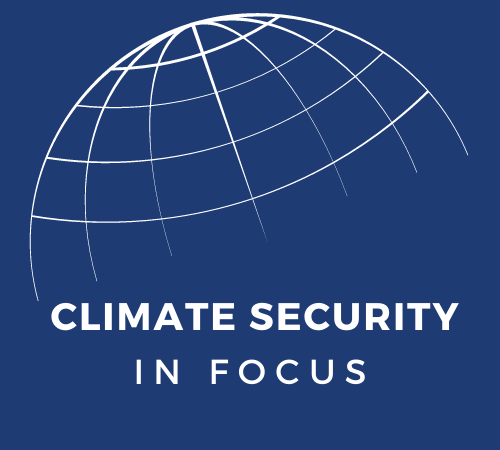
NATO Climate Security Developments Ahead of Vilnius
Next week, the NATO Summit will take place in Lithuania, which offers a timely opportunity to reflect on NATO’s previous and historic commitments to climate security and related developments. In June 2022, the NATO Summit featured a key climate security discussion on the first day of talks, alongside the introduction of a Climate Change & Security Impact Assessment that explicitly identified climate change as a national security threat to the U.S. and its allies. Complementing this announcement, the Biden administration stated that it would work with its allies to combat climate change by “mainstreaming climate considerations in intelligence analysis,” promoting energy resilience, and reducing energy dependence and “energy demand in military procurement.” As part of the New Strategic Concept—a central initiative of the NATO summit—NATO will continue to “develop appropriate tools and collective responses to transnational threats,” which includes climate change. However, for NATO to succeed in mitigating and adapting to the effects of climate change, the U.S. and its allies will need to invest in measures that transform their goals into practical outcomes.
The 2022 Impact Assessment was a continued effort that stemmed from the NATO Action Plan on Climate Change and Security that was adopted by NATO leaders in 2021 and, by extension, the first acknowledgement by NATO of a link between climate change and security in 2010. The 2021 Plan identifies climate change as a threat multiplier that makes it more challenging for militaries to carry out their tasks. Disruptive and erratic weather events and patterns test the resilience of military installations and critical infrastructure and impair the effectiveness of operations and missions.
Climate change also shapes the geopolitical environment by creating new opportunities for increased instability and competition resulting from thawing permafrost and desertification. Another noted impact recognized by the Plan was that climate change can create conditions for food and water insecurity—through drought, soil erosion, and marine environmental degradation—that disproportionately impact vulnerable populations and potentially exacerbate “state fragility, fuel conflicts, and lead to displacement, migration, and human mobility” that can be exploited by nefarious organizations and countries that seek to threaten NATO.
Notably, the Plan committed to four actionable items:
- Increase Allied awareness by conducting an annual Climate Change and Security Impact Assessment that analyzes the impact of climate change on NATO’s strategic environment, assets, installations, missions and operations.
- Adapt to climate change by incorporating climate change considerations into NATO’s work on resilience, civil preparedness, defense planning, capability delivery, assets and installations, standards, innovation, training, exercises, and disaster response. Procurement practices and deterrence and defense strategies will change to adapt to climate change.
- Contribute to the mitigation of climate change by analyzing NATO’s greenhouse gas emissions from military activities and installations, with data on energy demand and consumption helping to inform investment strategies in innovative and sustainable technologies.
- Enhance outreach by strengthening exchanges with partner countries and in international and regional organizations that actively work on climate security.
Additionally, the Impact Assessment accompanied an announcement that NATO would reduce its greenhouse gas emissions by at least 45 percent by 2030 and reduced down to net zero by 2050. The Assessment was clear that climate change is an “overarching challenge of our times,” with the associated threats expected to grow in scope, scale, and intensity. The Impact Assessment further highlighted that there will be “more extreme weather and natural disasters putting our citizens at risk,” more conflicts will “erupt over access to resources,” coastal flooding, and militaries will “increasingly be required to operate in extreme heat and extreme cold.” Therefore, the Impact Assessment draws attention to the effects of various climatic hazards along four lines: (1) NATO’s strategic environment; (2) NATO’s assets and installations; (3) NATO’s missions and multi-domain operations; and (4) NATO’s resilience and civil preparedness.
The specific, direct impacts of climate change on military infrastructure and equipment capability, and indirect implications for mission profiles and supply chains are also included in the Impact Assessment. These impacts underscore the well-established notion that climate change is a threat multiplier. In an ASP interview with Admiral James Stavridis, Admiral Stavridis drew attention to the threats posed by “rising sea levels and the effects on key coastal cities, such as Norfolk, Virginia, home to the world’s largest naval base and a NATO operational headquarters.” In a separate ASP interview with Ambassador Doug Lute, Ambassador Lute remarked that climate change is the “defining challenge of our time.” In June 2023, ASP discussed how climate change is adversely “impacting infrastructure, hurting our economy, and undermining the security and wellbeing of our fellow Americans” at the Citizen’s Climate Lobby conference.
Measures to mitigate the effects of climate change, and reduce military greenhouse emissions include improving energy efficiency, research and development in energy storage, investments in sustainability mobility and smart energy systems, improved water and fuel resource management, and procuring more sustainable military equipment, among many other measures. Continued investment in these measures are critical for NATO to navigate existing climate change effects and to prepare for forthcoming effects that will intensify in frequency and severity. This continued investment requires the U.S. to continue to play a crucial role in NATO strategies, and to engage in its own domestic preparedness strategies. With more planned annual Climate Change and Security Impact Assessments, NATO is on the path to successfully strategizing its operations around the challenges presented by climate insecurity.





